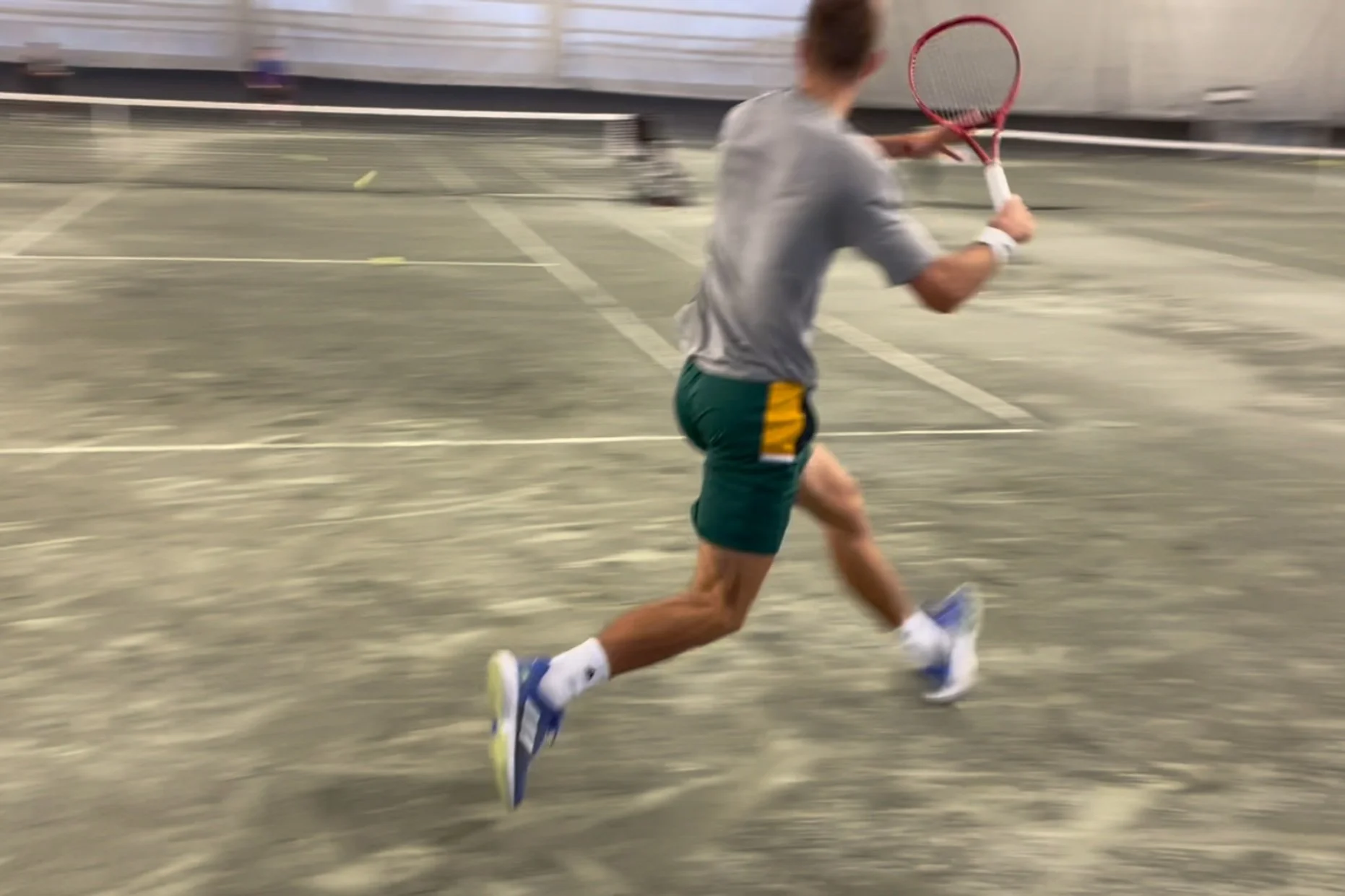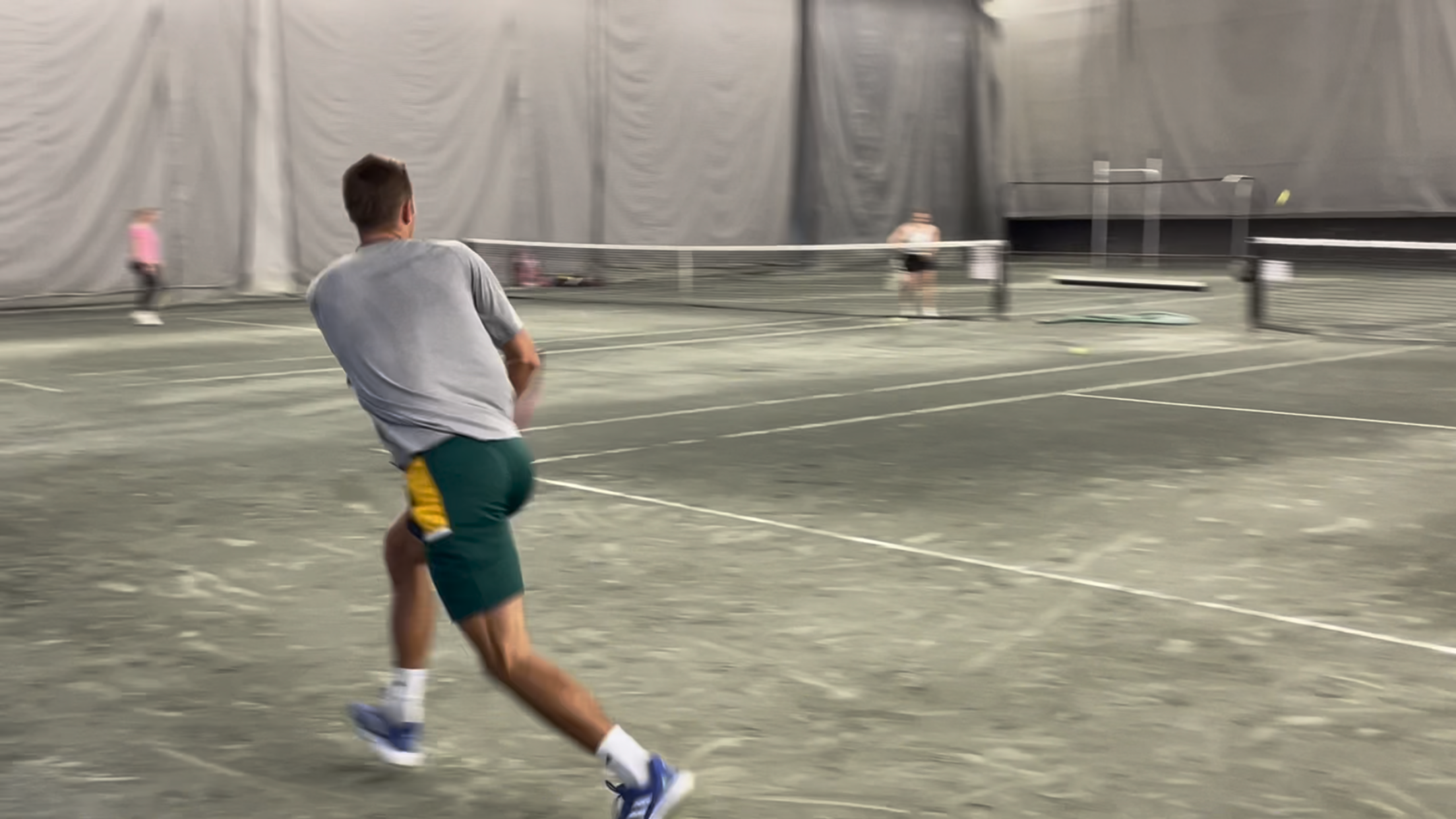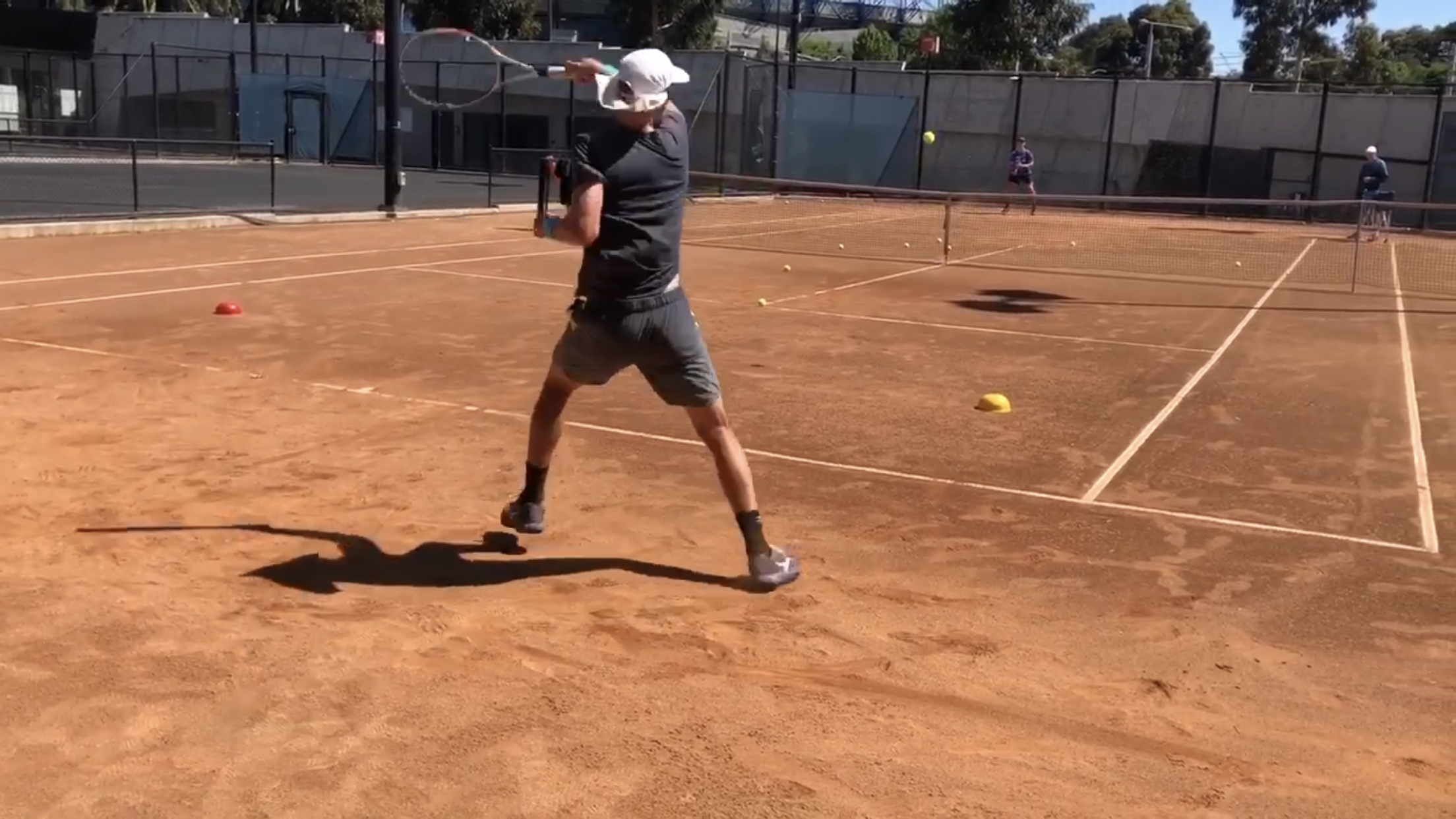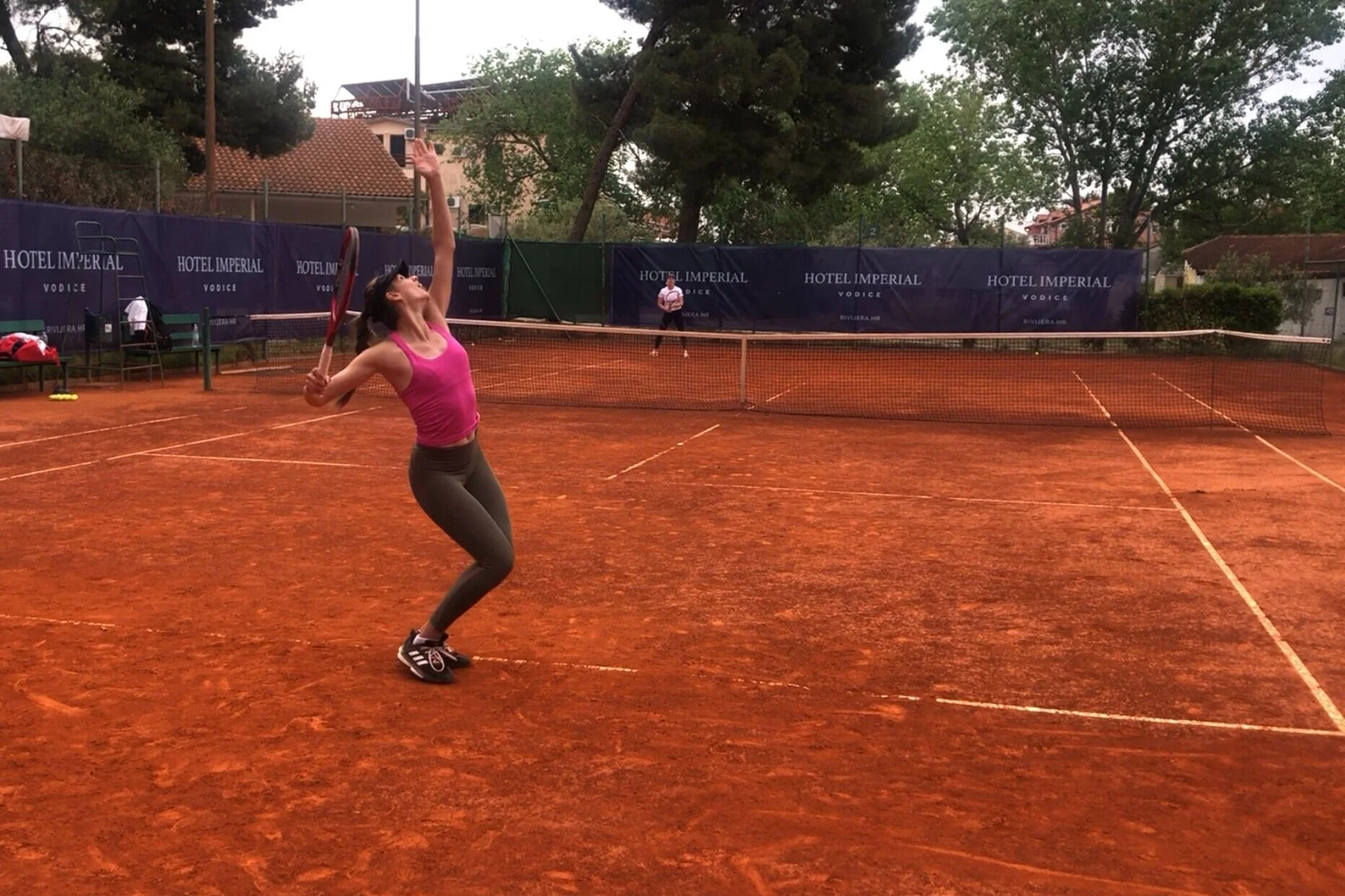Novak Djokovic is arguably the best tennis player of all time. It’s no secret he possesses an array of talents and skills. From his technique, to his mental toughness and everything in between.
His physical abilities aren’t too shabby either. Flexibility, stamina and movement are merely a few that come to mind.
While Novak is unquestionably a physical specimen, he’s not the fastest tennis player I’ve ever seen. It’s obvious he’s not the strongest. And I’d say he’s probably not one of the most powerful out there either.
A little while back, I wrote a post highlighting the need to serve earlier in practices - check out that article here.
I also discussed this on the BTS podcast with PhD in Sport Science, Jaime Fernandez, who recently published a research paper on this exact topic. His conclusion - serving should happen at some point in the first half of a tennis practice AND NOT at the very end of a session. This will benefit players both from a development standpoint and from an injury mitigation point of view.
Whether you’re a tennis player or a tennis coach, if most of your practice time is spent hitting balls from a basket or hand feed, you might need to rethink your strategy.
Before I dive into this argument, let’s set the stage. There are essentially 2 types of practice balls that a player can receive. A live ball and a dead ball.
What does the typical practice in tennis look like? If you’re someone that’s been around the game for many years, it probably follows a pretty similar structure - mini-tennis, groundstrokes, volleys/overheads and lastly, serves and returns.
But what if a player’s priority is to improve the serve? Does it make sense to hit for an hour (or like in many tennis settings, beyond an hour) prior to serving?
While there’s nothing normal about the current competitive tennis calendar, a few of my players are in a situation where they’re able to play a competitive league - organized by Tennis Canada.
Over the last few weeks, I’ve had the chance to play more tennis. More than usual anyway. And it’s been really great (although I’m not in as good of shape as I thought I was!). The truth is, I’ll be 35 this year, which means I could, in theory, play senior ITF events. Maybe I will, who knows.
By this point, if you’re a tennis player, it’s no secret that you’re itching to get on the tennis court. Who wouldn’t be? It’s that time of year. Warmer weather. Flowers blooming. Outdoor tennis is around the corner.
Unfortunately, however, many players go about it the wrong way. Most, after a long layoff, are so eager to get back to the tennis court, they schedule multiple sessions that first week. Not only that, they’re so fired up that they hold nothing back. Running from side to side, hitting with that new found strength they’ve developed over the winter.
Are you a high-performance player or coach? If so, this post is for you.
You see, I’ve coached in a number of high-performance settings. From academies, to federations and in private settings. One common characteristic that has struck me time and again is training schedules. The typical schedule sees players training Monday to Friday. On rare occasions, some take part in Saturday morning sessions - but this is certainly not the norm. As you can see, these settings follow the regular school and work week schedule.
But is it the most ideal option when developing an elite performer?
Have you ever been working on a player's forehand and thought "they're just not getting it". And instead of talking the player's ear off with detailed mechanics or trying every cue in the book, you decide to get them to throw a med ball.
All of a sudden, after just 1 or 2 cues - something like “thrust your rear hip” or “turn your torso, then release the ball” - they found the correct movement. You then return to hitting forehands and voila, they finally ‘get it’.
Imagine this scenario. An amateur player takes a lesson from a coach with the hopes of hitting a forehand like Roger Federer.
Let’s say the coach plays along. He/she presents a sequence of images to the amateur in order to see exactly the various phases of Roger’s forehand. Next, the amateur performs shadow swings, going through each position as carefully as possible. The coach then feeds the amateur a few balls, providing feedback ONLY on how close the stroke looks to Roger’s.
When teaching various tactical scenarios to players, I often ask them the following question: “what do you think is the most common rally length in tennis”? Less experienced players jump to answers like 7 or 9 while those that have been playing for many years reply with 3, 4 or 5. Do YOU know what it is? When it comes to professional tennis, according to Brain Game Tennis, it’s 1. Can you believe that? The most common rally length (called the mode, in statistics) is 1! That’s a service ace or a service winner (i.e. the returner makes an error off the serve). This happens about 30% of the time. The next most common rally length is 3 - that’s a serve, return and one more shot.
In last week’s post, we introduced the concept of grit. We also took a closer look at grit’s correlation to elite sport. What did we find? For one, according to recent evidence, elite athletes across many sports are grittier than their non-elite counterparts. Secondly, those same athletes more consistently commit to their sport over the long haul - in other words, they stick to it. And lastly, the grittier athletes (the elite), were more adept at persevering through challenges compared to non-gritty athletes.
Have you ever wondered what separates athletes that ‘make it’ from those who don’t? Are physical skills the key determinant? While at times it may be the case, I’ve seen many players in tennis settings with superior physical abilities get outperformed...so fitness alone isn't the answer. It must be technical and tactical abilities, right? While critical, I’ve also witnessed supreme skill, coupled with a sound game plan, get beaten time and again. So what is it then? All of these factors play a massive role in who succeeds and who doesn’t, I’m sure of it, but in my books, one factor seems to outweigh the rest - by at least a hair. The psychological component.
In last week’s post, we took a closer look at the principle of progressive loading and offered several ways in which we can effectively ‘progress’ a player both on and off the tennis court. To reiterate last week's point, it’s critical that we look at progressions from a long-term macro perspective. Why so? Well, progress is rarely (if ever) linear. Further to that, each of the biomotor qualities that we spoke briefly about last week (speed, strength, stamina, suppleness, skill), improve and regress, depending on which we give greater attention to (i.e. more training stimuli).
While there was a lot of positive feedback from last week’s post on blocked vs. random practice, there was also a bit of confusion. I suppose the term ‘random’ can be a bit misleading. To clear the air, this week’s post will attempt to clarify the supposed dichotomy between blocked and random practice and offer a slightly different perspective to the argument. Furthermore, there are 2 other forms of practice - called ‘variable practice’ and ‘constant practice’, which can be influenced by both block and random approaches. Lastly, several examples of each practice type will be offered and described, along with the 'why' behind their use.
Many experts in the field of motor learning believe that the way a coach interacts with an athlete, bears a tremendous impact on the improvements that athlete makes. These same experts, however, would argue that the organization of a practice is perhaps even more important than what a coach says to his/her athlete. Let’s assume that to be true for a moment. As a coach, would that change the way you look at your practices? As a player, would it affect your perspective when attempting to improve serve accuracy, for example?
Are you familiar with the ‘10,000 hour rule’? Many of you probably are. If you’re read Malcolm Gladwell’s book, ‘Outliers’, then you definitely are. The premise goes like this; practice something a lot - 10,000 hours, or about 10 years - and you’ll develop expertise in that particular domain. It sounds simple doesn’t it. But is it truly so? Many of us, or our students, have played tennis for well over 10 years, but I wouldn’t necessarily start calling ourselves ‘experts’. Now we might be pretty good, but expertise, as defined by researchers in this field, means far more than just ‘pretty good’ or even ‘really good’.
Last week I wrote about some key lessons I learned from a weightlifting coach. One of those key lessons was the importance of general training for athletes. Although general training is vital for any athlete, developing athletes may get the greatest benefit from this type of work. When I talk about general training, I am referring to non sport specific movements. For tennis players, this means movements that are non tennis related. John Kiely, sport scientist and elite coach, refers to general training, especially in the early years of development, as movement diversity. In this article, we’ll explore the current dogma in physical preparation for tennis, why early specialization is an almost must and the theory behind general training.


















